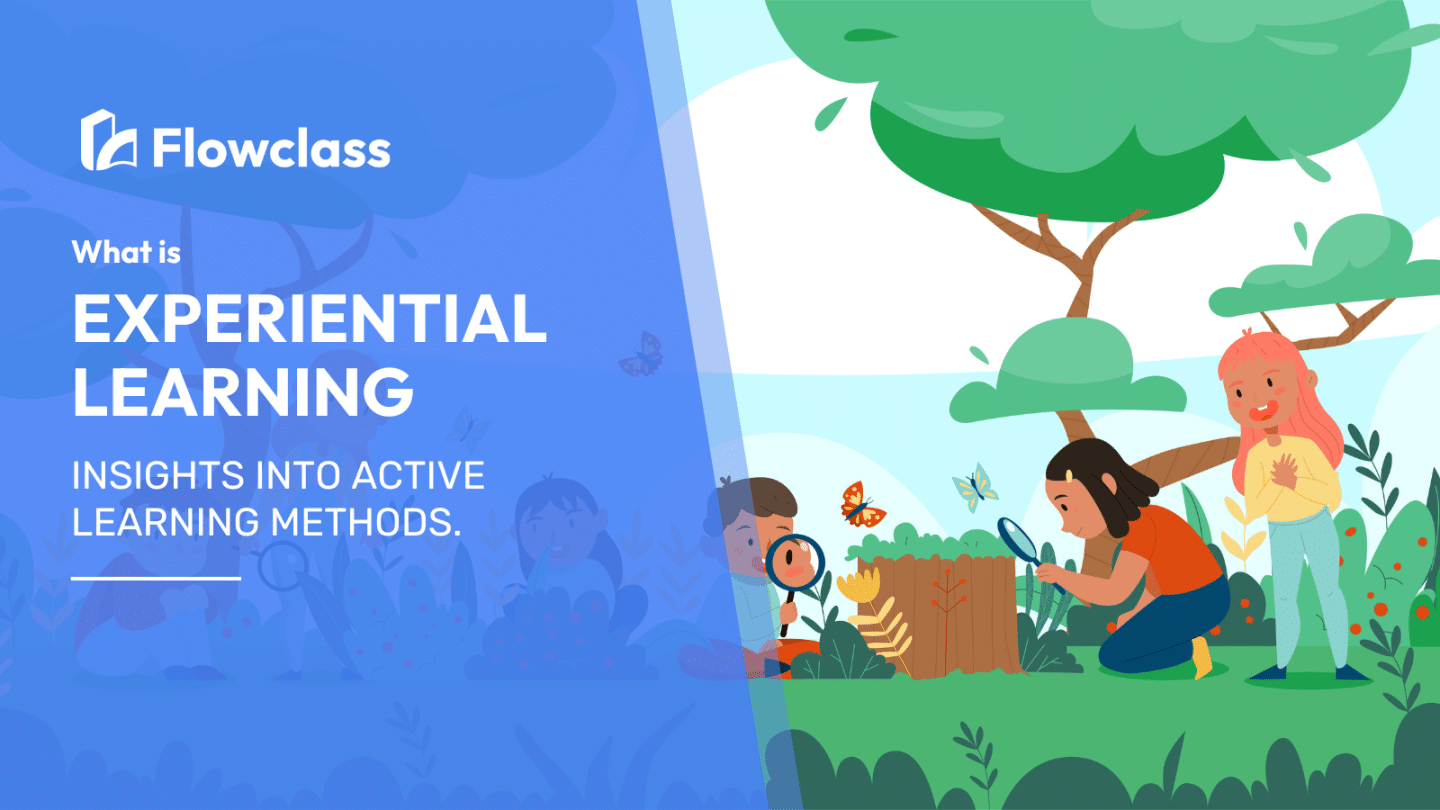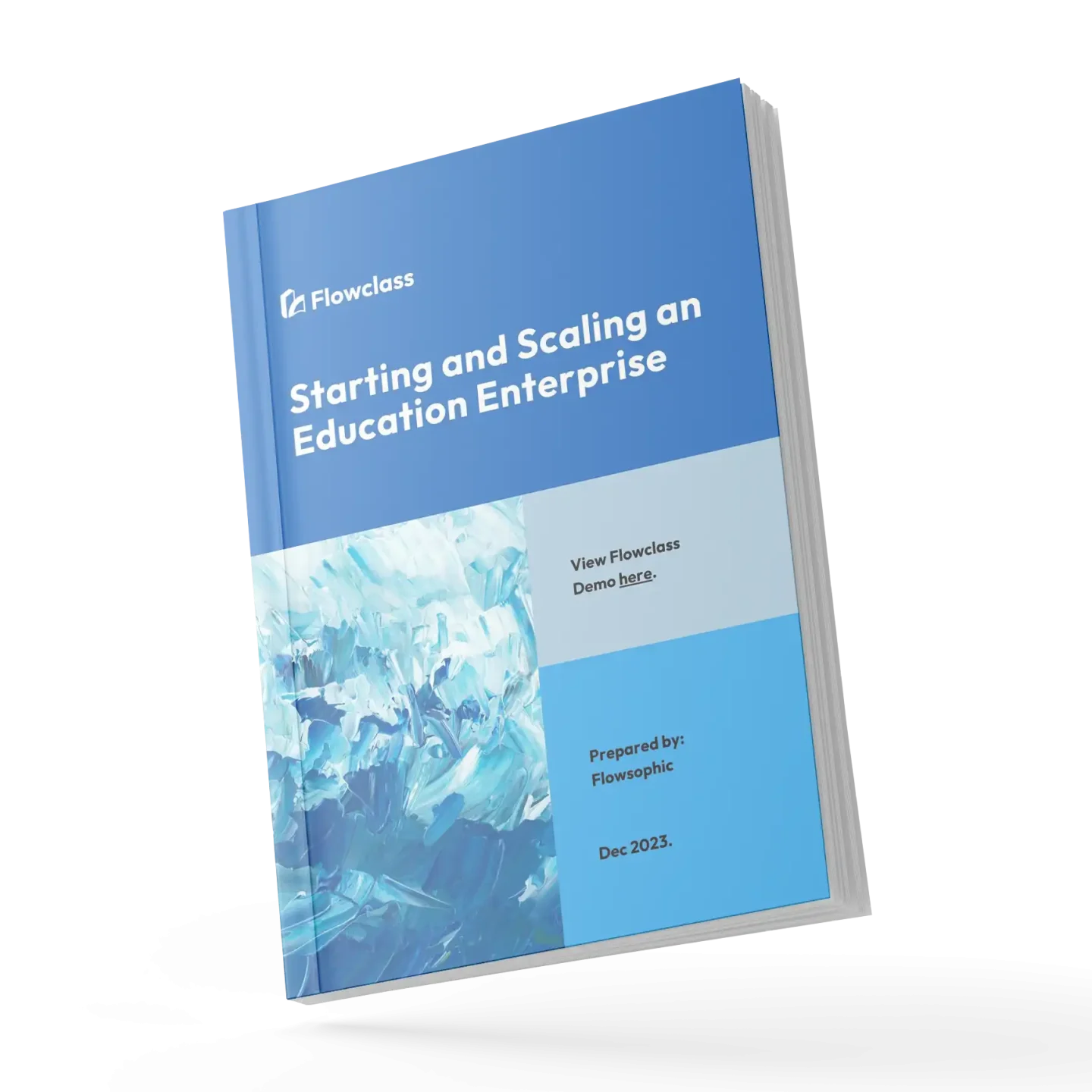Welcome to the world of experiential learning, where active learning methods take center stage. Have you ever felt like traditional classroom settings just don’t cut it? Experiential learning flips the script, prioritizing hands-on experiences and real-world applications to foster deeper understanding and engagement.
In this article, we will delve into the concept of experiential learning and explore the various active learning methods that enhance the educational experience. From immersive simulations to project-based learning, we’ll uncover how these approaches cultivate critical thinking, problem-solving skills, and creativity.
Experiential learning offers a dynamic environment that encourages students to actively participate in their own learning journey. By stepping out of their comfort zones and engaging in practical activities, learners develop a deep understanding of concepts and gain valuable skills that will serve them well beyond the classroom.
Join us as we navigate the world of experiential learning and discover the transformative power of active learning methods. Let’s unlock new possibilities and unleash the full potential of education together.
Understanding active learning methods

Active learning methods are educational approaches that engage students directly in the learning process, rather than passively receiving information. These methods encourage students to actively participate, think critically, and apply what they are learning. In contrast, traditional lecture-based teaching often relies on passive listening and memorization, which can limit student engagement and deep understanding.
Active learning methods encompass a wide range of techniques, including group discussions, problem-solving exercises, simulations, case studies, and hands-on activities. These approaches aim to foster critical thinking, problem-solving skills, and collaborative learning. By actively engaging with the material, students develop a deeper understanding of concepts and are better able to apply their knowledge in real-world scenarios.
The foundation of active learning lies in the belief that learners construct their own understanding through experience and reflection. This constructivist approach emphasizes the importance of active engagement, where students are not merely recipients of information but rather active participants in the learning process. By encouraging students to explore, experiment, and apply their knowledge, active learning methods help to cultivate a sense of ownership and investment in their own learning journey.
Active learning methods have gained widespread recognition in the education community for their ability to enhance student engagement, improve learning outcomes, and develop essential skills. These methods challenge students to think critically, collaborate with their peers, and apply their knowledge in practical contexts. By shifting the focus from passive absorption to active participation, active learning methods create a dynamic and engaging learning environment that fosters deeper understanding and long-term retention of information.
Benefits of experiential learning

Experiential learning is a powerful approach that aligns closely with active learning methods. This approach emphasizes the importance of hands-on experiences, real-world applications, and reflective practice to facilitate learning and skill development. By immersing students in authentic learning environments, experiential learning encourages them to actively engage with the material, apply their knowledge, and learn from the consequences of their actions.
One of the primary benefits of experiential learning is its ability to enhance student engagement and motivation. When students are actively involved in the learning process, they are more likely to find the material relevant, interesting, and personally meaningful. This increased engagement can lead to higher levels of retention, as students are more invested in understanding and applying the concepts they are learning.
Moreover, experiential learning fosters the development of critical thinking and problem-solving skills. By facing real-world challenges and working through complex scenarios, students learn to analyze information, make informed decisions, and adapt their strategies based on the outcomes. This hands-on approach allows learners to develop a deeper understanding of the subject matter and gain practical experience that can be applied in various contexts.
Another significant benefit of experiential learning is its capacity to bridge the gap between theory and practice. By engaging in activities that mirror real-world situations, students can see the direct application of their knowledge and skills. This practical application helps to solidify their understanding, enabling them to transfer their learning to new contexts and scenarios. This practical orientation can be particularly valuable in preparing students for careers, as they develop the skills and confidence needed to succeed in their chosen field.
Experiential learning statistics
The growing popularity and effectiveness of experiential learning are supported by various research studies and statistics. These data points highlight the significant impact of this approach on student learning, engagement, and skill development.
One study conducted by the National Training Laboratories found that the average retention rate for lecture-based learning is around 5%, while the retention rate for experiential learning methods, such as group discussions and practice, can be as high as 75%. This dramatic difference underscores the power of active engagement and hands-on experiences in facilitating deeper understanding and long-term retention of information.
Another study by the Association for Experiential Education revealed that 91% of students who participated in experiential learning programs reported an increase in their problem-solving skills, and 89% reported an improvement in their critical thinking abilities. These statistics demonstrate the significant impact of experiential learning on the development of essential 21st-century skills, which are highly valued in both academic and professional settings.
Furthermore, a survey by the National Association of Colleges and Employers found that employers prioritize practical experience and hands-on learning when evaluating job candidates. In fact, 95% of employers reported that they prefer to hire candidates with relevant work experience, highlighting the importance of experiential learning in preparing students for successful careers.
These statistics underscore the growing recognition of the value of experiential learning and active learning methods in education and the workplace. By embracing these approaches, educational institutions and organizations can foster the development of well-rounded, adaptable, and highly skilled individuals who are equipped to navigate the challenges of the modern world.
Incorporating experiential learning in the classroom
Incorporating experiential learning into the classroom can transform the educational experience, fostering deeper engagement, critical thinking, and the development of practical skills. Teachers and instructors can leverage a variety of active learning methods to create dynamic and immersive learning environments.
One effective approach is to incorporate project-based learning, where students work collaboratively to solve real-world problems or create tangible products. By engaging in hands-on projects, students have the opportunity to apply their knowledge, develop problem-solving skills, and learn from the iterative process of design and implementation. This approach encourages students to take ownership of their learning, as they navigate the challenges and make decisions that shape the final outcome.
Another powerful experiential learning method is simulation-based training, which allows students to practice and apply their skills in a safe, controlled environment. Simulations can range from role-playing scenarios to interactive digital simulations, providing students with the opportunity to engage in realistic situations and make decisions with real-time feedback. This approach not only enhances learning but also builds confidence and prepares students for the demands of their future careers.
Incorporating field trips, site visits, and community engagement activities can also be highly effective in creating experiential learning opportunities. By exposing students to real-world settings and interactions, these activities help to bridge the gap between theory and practice, allowing students to witness the practical application of their knowledge. Furthermore, these experiences can foster a sense of social responsibility and civic engagement, as students engage with local communities and organizations.
To successfully implement experiential learning in the classroom, instructors must carefully design and structure the activities to align with learning objectives and ensure meaningful reflection and analysis. By providing opportunities for students to actively engage, experiment, and reflect on their experiences, educators can cultivate a dynamic and transformative learning environment that prepares students for the challenges of the 21st century.
Examples of active learning methods

Active learning methods encompass a wide range of techniques that engage students in the learning process. These methods go beyond the traditional lecture-based approach and encourage students to actively participate, think critically, and apply their knowledge. Here are some examples of active learning methods that can be incorporated into the classroom:
Group discussions: Facilitating small-group discussions allows students to share their perspectives, engage in collaborative problem-solving, and learn from their peers. This approach promotes critical thinking, communication skills, and the exchange of diverse ideas.
Problem-based learning: In this method, students are presented with real-world problems or scenarios and are tasked with identifying the underlying issues, gathering relevant information, and developing solutions. This approach fosters problem-solving skills, critical thinking, and the application of knowledge in practical contexts.
Case studies: By analyzing and discussing case studies, students can apply their knowledge to realistic situations, evaluate decision-making processes, and consider the implications of different approaches. This method encourages students to think critically, engage in analytical reasoning, and develop their problem-solving abilities.
Flipped classroom: In the flipped classroom model, students engage with course content, such as lectures or readings, outside of class time, and then use class time for active learning activities, such as discussions, problem-solving exercises, or collaborative projects. This approach promotes self-directed learning and allows for more in-depth exploration and application of concepts during class.
Experiential learning activities: Hands-on, experiential learning activities, such as simulations, role-playing, field trips, or community engagement projects, allow students to actively engage with the subject matter and develop practical skills. These activities foster a deeper understanding of concepts, enhance problem-solving abilities, and promote the transfer of learning to real-world situations.
By incorporating a variety of active learning methods, educators can create dynamic and engaging learning environments that cater to different learning styles, foster critical thinking, and prepare students for the challenges they will face in their academic, professional, and personal lives.
Implementing experiential learning in professional settings
Experiential learning is not limited to the classroom; it can also be a powerful tool in professional settings, from corporate training programs to workforce development initiatives. By incorporating active learning methods, organizations can enhance employee engagement, improve skill development, and foster a culture of continuous learning and growth.
In the corporate world, many organizations have recognized the value of experiential learning in their training and development programs. For example, some companies have implemented leadership development programs that involve simulations, case studies, and hands-on projects. These activities allow employees to apply their knowledge, practice decision-making, and receive feedback in a safe and supportive environment. This approach not only enhances leadership skills but also fosters a sense of ownership and investment in the learning process.
Similarly, in the field of workforce development, experiential learning has become a crucial component of training programs. Organizations working to upskill or reskill their workforce often incorporate hands-on training, apprenticeships, and on-the-job learning opportunities. These experiences allow individuals to develop practical skills, gain real-world experience, and seamlessly transition into new roles or industries. By bridging the gap between theory and practice, experiential learning helps to ensure that workers are equipped with the necessary skills and confidence to succeed in their careers.
Beyond formal training programs, experiential learning can also be integrated into the daily routines and work environments of organizations. This can involve encouraging employees to participate in cross-functional projects, engage in job shadowing, or take on stretch assignments that challenge them to step out of their comfort zones. By fostering a culture of continuous learning and growth, organizations can empower their employees to develop new skills, adapt to changing market demands, and contribute to the organization’s overall success.
Implementing experiential learning in professional settings requires a strategic approach that aligns with the organization’s goals and the specific needs of its workforce. By collaborating with learning and development experts, organizations can design and implement effective experiential learning programs that drive employee engagement, skill development, and organizational growth.
Experiential learning resources and tools
As the demand for experiential learning continues to grow, a wealth of resources and tools have emerged to support educators, trainers, and organizations in implementing these active learning methods effectively. These resources can help guide the design, implementation, and evaluation of experiential learning programs, ensuring that they achieve their desired learning outcomes.
One valuable resource is the Association for Experiential Education (AEE), a professional organization dedicated to promoting and advancing the field of experiential learning. The AEE provides a wealth of information, research, and best practices on their website, as well as opportunities for professional development and networking with other practitioners.
Another useful tool is the Kolb Experiential Learning Cycle, developed by David Kolb, a renowned scholar in the field of experiential learning. This model outlines the four key stages of the experiential learning process: concrete experience, reflective observation, abstract conceptualization, and active experimentation. By understanding this cycle, educators and trainers can design more effective experiential learning activities that foster deeper understanding and skill development.
Additionally, there are numerous online platforms and digital tools that can enhance and support experiential learning. For example, virtual reality (VR) and augmented reality (AR) technologies can create immersive simulations and interactive learning experiences. Collaboration tools, such as online whiteboards and project management software, can facilitate group-based experiential learning activities. These technological resources can help to bridge the gap between theory and practice, providing learners with engaging and accessible experiential learning opportunities.
To further support the implementation of experiential learning, various educational institutions, training organizations, and consulting firms offer resources, workshops, and professional development programs. These resources can provide guidance on designing effective experiential learning programs, integrating active learning methods into existing curricula, and evaluating the impact of these approaches on learner outcomes.
By leveraging these resources and tools, educators, trainers, and organizations can create dynamic and engaging learning environments that foster the development of essential skills, enhance learner engagement, and prepare individuals for the challenges of the modern world.
Best practices for successful experiential learning
To ensure the successful implementation of experiential learning, it is essential to follow a set of best practices that can guide the design, facilitation, and evaluation of these active learning methods. By adhering to these principles, educators, trainers, and organizations can create transformative learning experiences that maximize the benefits of experiential learning.
- Align with learning objectives: Clearly define the learning objectives and ensure that the experiential learning activities are designed to support those objectives. This alignment helps to ensure that the activities are purposeful and contribute to the overall learning outcomes.
- Provide structured reflection: Incorporate structured reflection opportunities throughout the experiential learning process. This allows learners to analyze their experiences, connect them to theoretical concepts, and draw insights that can be applied in future situations.
- Encourage active engagement: Design activities that actively engage learners and foster a sense of ownership in the learning process. This can involve problem-solving, decision-making, and hands-on application of knowledge.
- Facilitate feedback and debriefing: Provide timely and constructive feedback to learners and facilitate debriefing sessions that help them make sense of their experiences and identify areas for improvement.
- Ensure a safe and supportive environment: Create a learning environment that is psychologically safe, where learners feel comfortable taking risks, making mistakes, and engaging in open dialogue.
- Promote collaborative learning: Incorporate group-based activities that encourage learners to work together, share perspectives, and learn from one another.
- Emphasize real-world relevance: Whenever possible, connect the experiential learning activities to real-world scenarios, challenges, or applications that are relevant to the learners’ interests and future endeavors.
- Foster continuous improvement: Regularly evaluate the effectiveness of the experiential learning program and make iterative improvements based on learner feedback, observed outcomes, and emerging best practices.
- Provide necessary resources and support: Ensure that learners have access to the resources, tools, and support they need to engage effectively in the experiential learning activities.
- Encourage learner agency: Empower learners to take an active role in shaping their learning experiences, allowing them to make choices, take initiative, and exercise their creativity.
By adhering to these best practices, educators, trainers, and organizations can create transformative experiential learning programs that foster deep learning, skill development, and personal growth. Through these active learning methods, learners can unlock their full potential and thrive in the ever-evolving landscape of the 21st century.
Conclusion
In the dynamic and ever-changing landscape of education and professional development, experiential learning has emerged as a powerful approach that challenges the traditional boundaries of learning. By embracing active learning methods, we can create transformative experiences that engage learners, develop essential skills, and prepare them for the challenges of the modern world.
Throughout this article, we have explored the key principles and benefits of experiential learning, highlighting its ability to enhance student engagement, foster critical thinking, and bridge the gap between theory and practice. From immersive simulations to project-based learning, we have examined a wide range of active learning methods that can be incorporated into the classroom and professional settings.
The statistics and examples presented in this article underscores the growing recognition of the value of experiential learning. As more educational institutions and organizations adopt these approaches, we are witnessing a shift in the educational landscape, where learners are empowered to take an active role in their own learning journey.
By following the best practices outlined in this article, educators, trainers, and organizations can design and implement effective experiential learning programs that cultivate a dynamic and engaging learning environment. Through structured reflection, collaborative learning, and real-world relevance, learners can develop the skills, knowledge, and confidence they need to thrive in their academic, professional, and personal pursuits.
As we continue to navigate the complexities of the 21st century, the importance of experiential learning will only continue to grow. By embracing these active learning methods, we can unlock new possibilities, foster innovation, and empower individuals to become adaptable, critical-thinking, and collaborative problem-solvers. Join us in this transformative journey and discover the power of experiential learning.
📣 Interested in more articles like this? Check out our blogs!


